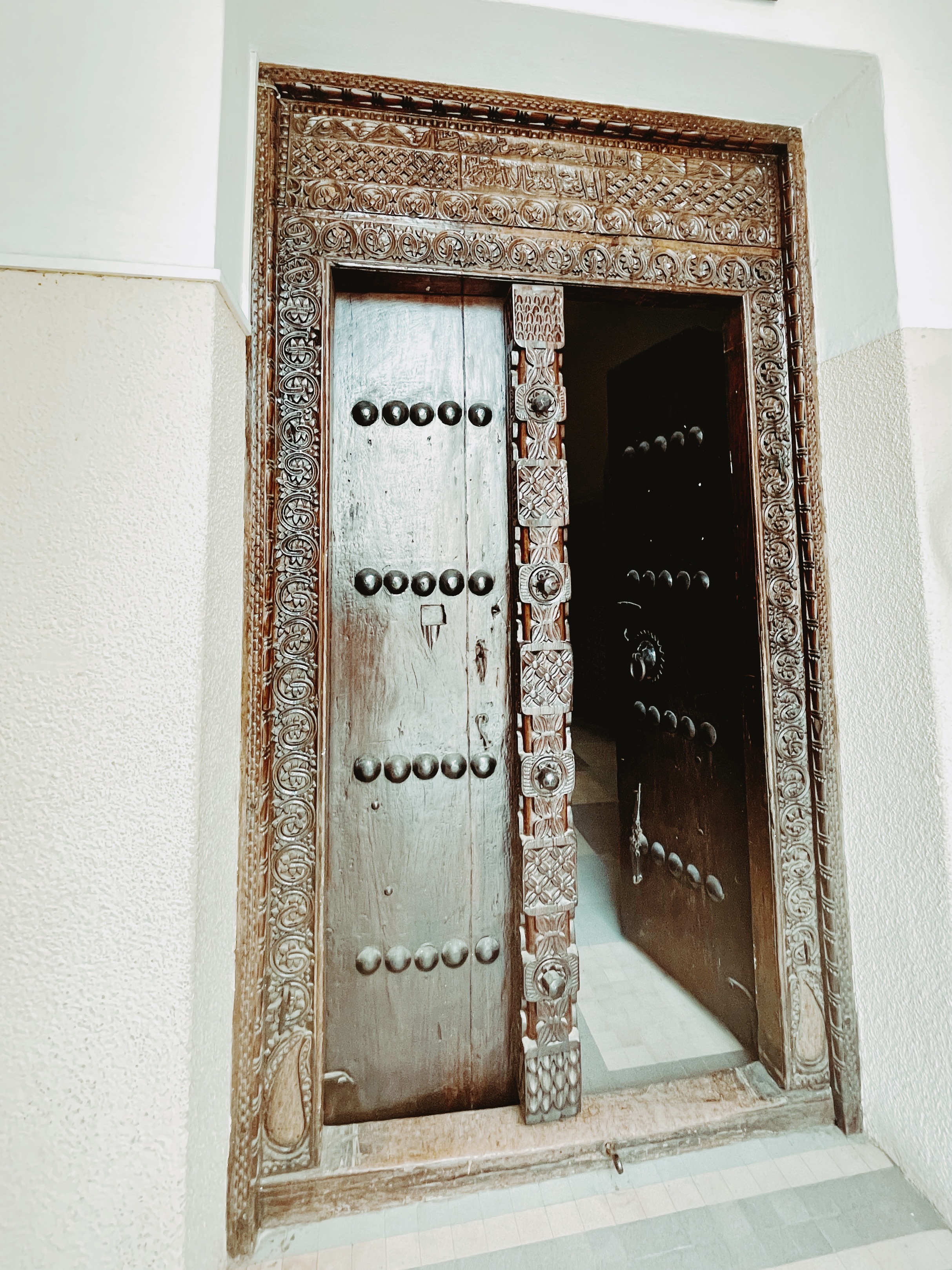Swahili doors or Zanzibari doors are a type of door that was developed in the Swahili coast during the Middle Ages and peaked in the 19th century. The oldest Swahili doors are found along with the East African coast from Mozambique Island to the northern coast of Kenya especially in older Swahili cities and towns such as Bagamoyo, Mikindani, Mombasa, Malindi, Lamu, Tanga and Zanzibar. The highest concentration of remaining doors is in Zanzibar city. The largest of doors with the most elaborate of carvings are found in Zanzibar city. The doors were considered a mark of status and prestige for wealthy Swahili merchant families especially in the old sections of Zanzibar attaining impressive dimensions in terms of size and carving details. The geographical distribution of the door is not limited to the coast especially in Tanzania, the doors can be found in many towns like Tabora, Moshi and Ujiji on the shores of Lake Tanganyika. This transfer was due to the caravan trade routes during the 19th century as the Arab and Swahili merchants established more recent settlements in the Tanzanian interior to facilitate the trade of ivory and enslaved people for the global market taking their doors carving tradition to build the homes of the rich traders.

The door is usually the first and foremost key element of Swahili architecture and was historically built before the rest of the home. Classic Zanzibari doors are divided into seven basic elements. The frame is divided into two vertical side posts with a heavy lintel on top. Two panels make up the doors with a large vertical center post attached to the doors from the lintel to the threshold. The threshold is a heavy beam 15 to 20 centimeters from the floor located on the base of the structure. The parts with most decorative features are the door frame and lintel. The doors themselves are not carved, instead, they are horizontally studded with metal tiers usually made of brass or cast iron that are seven centimeters long. These ties are placed with six or eight on each side of the door often projected from scalloped brass bases. Sometimes these tiers are added to the center post however, these tend to be much larger than those on door panels.
The origins of Swahili door style are considered to be from Swahili craftsmen and were frequently exported to mostly treeless Arabian peninsula as a handful of Swahili doors are seen in Muscat, Oman as Swahili craftsmen were commissioned by Sultan Barghash bin Said of Zanzibar in 19th century to carve doors for his palaces.
Africa Team